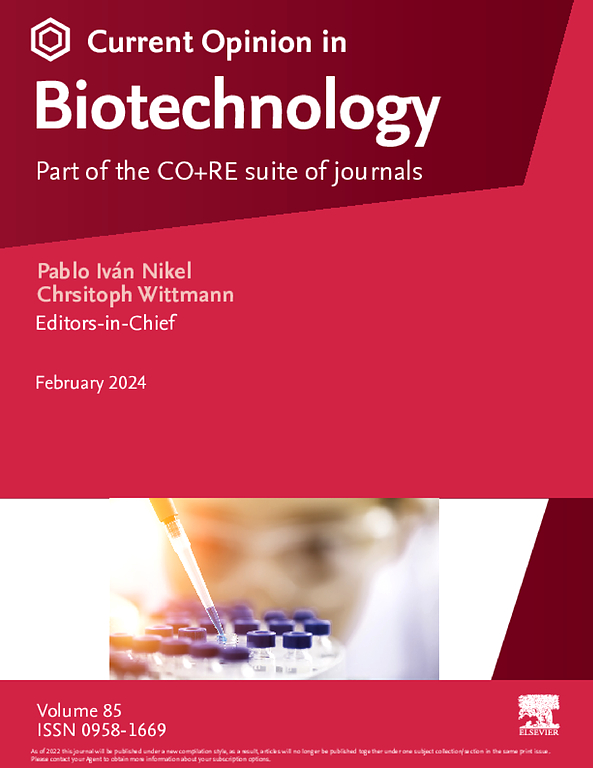Dos and don’ts for scaling up gas fermentations
IF 7.1
2区 工程技术
Q1 BIOCHEMICAL RESEARCH METHODS
引用次数: 0
Abstract
Gas fermentation processes (using CO2, CO, H2, CH4) have gained significant research and commercial interest in the last years due to their potential for carbon capture and sequestration. The small economic margins of these processes necessitate the use of large-volume bioreactors. For cost-effective gas delivery, we advise using pneumatically agitated bioreactors, like bubble column reactors, compared to traditional stirred-tank reactors. Although scale-up is conventionally done on an empirical and rule-of-thumb basis, rational methods are currently available. The most important one is the knowledge-driven scaling-up approach, wherein (CFD-based) hydrodynamic and kinetic models of large-scale bioreactors guide the design of representative lab-scale experiments. We suggest several future research directions to enhance the predictive capacity of these models and thereby accelerate scaling-up gas fermentation processes.
扩大气体发酵规模的注意事项。
气体发酵过程(使用CO2, CO, H2, CH4)由于其碳捕获和封存的潜力,在过去几年中获得了重要的研究和商业兴趣。这些工艺的经济边际很小,因此需要使用大容量的生物反应器。为了经济有效地输送气体,我们建议使用气动搅拌生物反应器,如气泡塔反应器,而不是传统的搅拌槽反应器。虽然扩大规模通常是在经验和经验的基础上进行的,但目前有一些合理的方法。其中最重要的是知识驱动的放大方法,其中(基于cfd的)大型生物反应器的流体动力学和动力学模型指导了具有代表性的实验室规模实验的设计。我们提出了几个未来的研究方向,以提高这些模型的预测能力,从而加速扩大气体发酵过程。
本文章由计算机程序翻译,如有差异,请以英文原文为准。
求助全文
约1分钟内获得全文
求助全文
来源期刊

Current opinion in biotechnology
工程技术-生化研究方法
CiteScore
16.20
自引率
2.60%
发文量
226
审稿时长
4-8 weeks
期刊介绍:
Current Opinion in Biotechnology (COBIOT) is renowned for publishing authoritative, comprehensive, and systematic reviews. By offering clear and readable syntheses of current advances in biotechnology, COBIOT assists specialists in staying updated on the latest developments in the field. Expert authors annotate the most noteworthy papers from the vast array of information available today, providing readers with valuable insights and saving them time.
As part of the Current Opinion and Research (CO+RE) suite of journals, COBIOT is accompanied by the open-access primary research journal, Current Research in Biotechnology (CRBIOT). Leveraging the editorial excellence, high impact, and global reach of the Current Opinion legacy, CO+RE journals ensure they are widely read resources integral to scientists' workflows.
COBIOT is organized into themed sections, each reviewed once a year. These themes cover various areas of biotechnology, including analytical biotechnology, plant biotechnology, food biotechnology, energy biotechnology, environmental biotechnology, systems biology, nanobiotechnology, tissue, cell, and pathway engineering, chemical biotechnology, and pharmaceutical biotechnology.
 求助内容:
求助内容: 应助结果提醒方式:
应助结果提醒方式:


